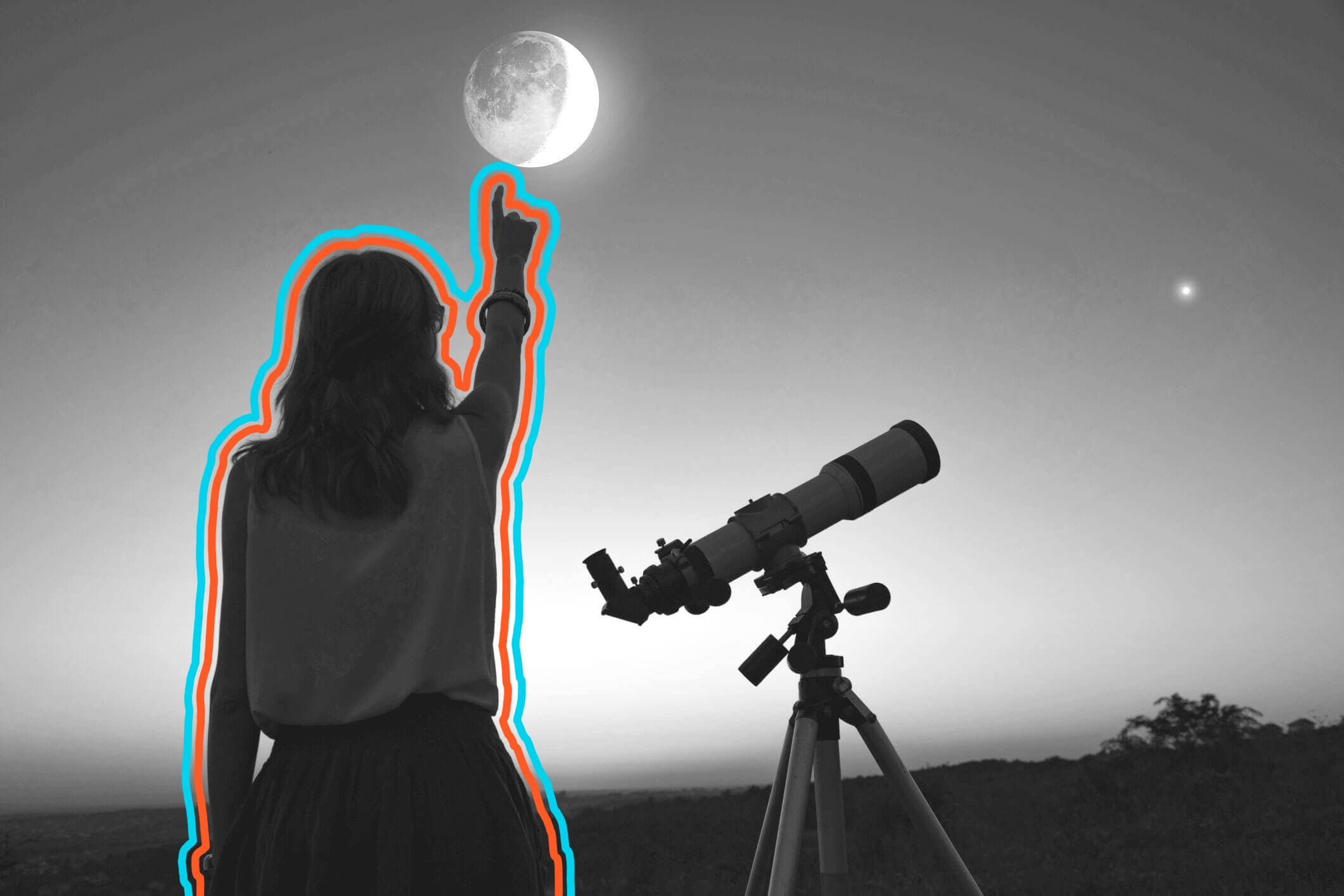

Once in a blue moon? Not if you know when (and where) to look. From the rare event that inspired this famous phrase to the so-called "supermoon," the moon can put on quite a show for those of us down on Earth. Here are five rare lunar events to keep an eye out for in the evening sky.
Blood Moon

A blood moon is a lot less scary than it sounds. The name comes from the color of the moon, which can range from a muddy brown to a bright red when the moon is in a lunar eclipse. A lunar eclipse occurs when the Earth passes between the sun and the full moon — blocking the light from the sun that usually illuminates the moon's surface. The only light hitting the moon comes from the sunrises and sunsets on Earth, giving it that distinct reddish hue.
Seeing the moon turn red can be a little unsettling, so it's no wonder that many ancient cultures once thought the blood moon was a bad omen. The Inca people believed a blood moon occurred when a jaguar attacked and ate the moon. Ancient Mesopotamians, on the other hand, believed the blood moon was an omen that meant their king was in danger. To counter the threat of the moon, they'd hide the true king and put a false king in his place until the moon returned to normal. Some Native American tribes viewed the red color as a sign that the moon was wounded, so they would sing healing songs to it.
Blue Moon

The phrase "once in a blue moon" alludes to the fact that blue moons are a pretty rare phenomenon, but there are actually two ways a blue moon can show up in the night sky. The first is when the moon actually appears to turn blue thanks to dust or pollution in the atmosphere. The dust affects how the light reaches our eyes, which makes the moon appear blue. After the catastrophic eruption of the volcano Krakatoa in 1883, the moon appeared blue for about two years.
On the other hand, the term "blue moon" also refers to a month that has two full moons in it. Most months only have one full moon since the lunar cycle (from a new moon to a full moon) takes roughly 29.5 days. Occasionally, the calendar will align and allow two full moons in a single month. That second full moon is referred to as a blue moon. It only happens once every two or three years, so you can count your lucky stars (or moons) when it happens.
Black Moon

While blue moons occur when there are two full moons in a single month, black moons are the exact opposite. Black moons most commonly refer to the second new moon in a single month, occurring on average every 32 months. Most of the time we get a single new moon each month due to the time it takes for the moon to travel around Earth. New moons happen when no sunlight shines on the moon's surface to illuminate it. There isn't much to see when you look up, although the moon is still there. When the new moon is over, you'll see a tiny sliver of the moon as it starts to receive the reflected light of the sun again.
But there is another lunar phenomenon that might be referred to as a black moon — when there is no new moon in the month. This is an even rarer occurrence, which only happens about once a decade. It’s only likely to happen in the month of February, since it has fewer days.
Harvest Moon

A harvest moon is more than the title of a great Neil Young song — it's also the name given to the full moon closest to the autumnal equinox. This is also the traditional time of the harvest when farmers would work in the fields and harvest their crops. The full moon allowed the farmers to work through the night, thanks to the extra hours of light overhead. Since the autumnal equinox happens every year, there is a harvest moon every year too, although the date changes.
Harvest moons marked an important time of the year for European agricultural societies, and often included festivals and celebrations. The event was (and is) also celebrated in China and other parts of Asia during the Mid-Autumn Festival, with lots of games and delicious mooncakes.
Supermoon

Love looking at the moon? Then the supermoon is the lunar event for you. Richard Nolle coined the term "supermoon" in 1979 to describe a moon that appears to be bigger and brighter in the sky than normal. It appears bigger because it's actually closer to Earth. Since the orbit of the moon around the Earth isn't perfectly symmetrical, there are times when the moon is slightly closer, which makes it appear about 12% bigger and an impressive 25% brighter than usual.
Want to impress your friends? Let them know that the astronomical term for a supermoon is a perigee-syzygy. "Perigee" is the term for the point when the moon is closest to the earth. "Syzygy" is the astronomical term for the alignment of the sun, the moon, and the Earth, which happens at every full and new moon. Supermoons are great for stargazers who want to get a better look at the surface of the moon with their telescope. They aren't as uncommon as other lunar events either. There are two supermoons in 2021 and two in 2022, so mark your calendars!
